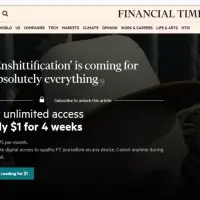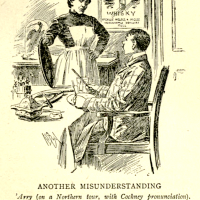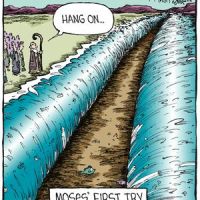 It is the week of Tolkien’s 125th birthday. In honour of the Professor’s twelfthty-fifth year, I thought I would catalogue the Tolkien posts featured here on A Pilgrim in Narnia. I hope you enjoy the great selection of guest bloggers and feature posts, filling out your Tolkien reading between now and Tolkien Reading Day (Mar 25th, 2017).
It is the week of Tolkien’s 125th birthday. In honour of the Professor’s twelfthty-fifth year, I thought I would catalogue the Tolkien posts featured here on A Pilgrim in Narnia. I hope you enjoy the great selection of guest bloggers and feature posts, filling out your Tolkien reading between now and Tolkien Reading Day (Mar 25th, 2017).
Tolkien’s work is rich with reflection on the world around us. In posts like “Let Folly Be Our Cloak: Power in the Lord of the Rings” and “Affirming Creation in LOTR,” I explore themes related to ideas that are central to Tolkien’s beliefs. The latter idea, creation and good things green, is covered also with Samwise Gamgee here and with Radagast the Brown here. One of the ones that resonates long after reading is the theme of providence, which I explore in “Accidental Riddles in the Invisible Dark.”
One surprising connection was “Simone de Beauvoir and the Keyspring of the Lord of the Rings“–a pairing that many would find unusual and includes some great old footage. Guest blogger Trish Lambert rounded out the discussion with “Friendship Over Family in Lord of the The Rings.” Author Tim Willard talks about “Eucatastrophe: J.R.R Tolkien & C.S. Lewis’s Magic Formula for Hope.” And you can follow Stephen Winter’s LOTR thought project here.
My most important contribution, I think, is my Theology on Tap talk, called “A Hobbit’s Theology.” It is one of the ideas I am struggling with most specifically in my academic work. And one of the more popular posts this year was a very personal one, “Battling a Mountain of Neglect with J.R.R. Tolkien.” Though I am still not sure if I should have written that post, it continues to connect with readers.
I remain fascinated by Tolkien’s development as an author, and spent some time of late exploring the theme. The most popular of pieces I wrote was the coyly titled, “The Shocking Reason Tolkien Finished The Lord of the Rings.” The reason is, of course, not all that shocking, but could be helpful for the subcreators amongst us. Two more substantial posts on the topic are “12 Reasons not to Write Lord of the Rings, or an Ode Against the Muses” and “The Stories before the Hobbit: Tolkien Intertextuality, or the Sources behind his Diamond Waistcoat.”
C.S. Lewis took an interest as well in Tolkien’s formation (see “Book Reviews” below). You can read more about it in Diana Pavlac Glyer’s Bandersnatch, and in this blog post, “‘So Multifarious and So True’: The C.S. Lewis Blurb for the Fellowship of the Ring.” Lewis’ support for Tolkien did not go unrewarded. Besides the great joy of Tolkien’s work, there was a time when Tolkien interceded a time or two on Lewis’ behalf. Friendship goes both ways.
Film Reviews
When the teaser trailer of the third film, The Battle of Five Armies, was released, I wrote “Faint Hope for The Hobbit.” Although it is clear in the trailers that this is a war and intrigue film, I still had some hope I would enjoy it. The huge comment section shows in that post shows that not everyone agreed it was possible!
My review of An Unexpected Journey captures the tug back and forth I feel about the films. I called it, “Not All Adventures Begin Well,” and it is a much more positive review than many of the hardcore Tolkien fans or academics. And it gives this cool dwarf picture:

“What Have We Done?” These words are breathed in the dying moments of the second installation of The Hobbit adaptation, The Desolation of Smaug. In this review I think about what it means to do film adaptations. While I do not hate this Hobbit trilogy, I think that Peter Jackson just got lost a bit.
When I finally got to The Battle of 5 Armies, I decided it would be fun to do a Battle of 5 Blogs. 5 other bloggers joined it, making it a Battle of 6 Blogs! But the armies are pretty tough to count anyhow. I titled my blog, “The Hobbit as Living Text.” It was a controversial approach to the film, I know. Make sure you check out the other reviewers link here. Some of us chatted about the films in an All About Jack Podcast, which you can hear here and here.
While these aren’t substantial reviews, I featured two indie films: a documentary on Tolkien’s Great War, and a fictional biopic recreating Tolkien’s invention of Middle Earth called Tolkien’s Road—both inspired, perhaps, by John Garth’s work.
 Book Reviews
Book Reviews
There was no greater friend of The Hobbit in the early days than C.S. Lewis. In “The Unpayable Debt of Writing Friends,” I talk about how, if it wasn’t for Lewis, Tolkien may never have finished The Hobbit, and the entire Lord of the Rings legendarium would be in an Oxford archive somewhere. Lewis not only encouraged the book to completion, but reviewed The Hobbit a few times. Here is his review in The Times Literary Supplement.
Lewis is not the only significant reviewer of The Hobbit. When he was 8, my son Nicolas published his review, just as the first film was coming to the end of its run. When I was posting Nicolas’ review, I came across another young fellow–the son of Stanley Unwin, the first publisher to receive the remarkable manuscript of The Hobbit. Unsure how children would respond, he paid his son, Rayner, to write a response to the book. You can read about it here: “The Youngest Reviewers Get it Right, or The Hobbit in the Hands of Young Men.”
I realize as I do this survey that I haven’t written a review of any of Tolkien’s key Middle Earth texts. I did, however, feature the Father Christmas Letters in our last season of advent.
 The Read-Aloud Hobbit
The Read-Aloud Hobbit
One of my first digital exchanges was participating in The Hobbit Read Along–you can still see the great collection of posts online. As I was doing this shared project, I was reading The Hobbit to my 7 3/4-year-old son. It was a great experience, but I made the mistake of doing accents to distinguish characters early on in the book. That’s fine when you’ve got oafish trolls or prim little hobbits. But a baker’s dozen of dwarfs stretched my abilities! You can read about my reading aloud adventures here.
In reading aloud I was really struck by the theme of providence in The Hobbit. I’m sure others have talked about it, but “Accidental Riddles in the Invisible Dark (Chapter 5)” is a great example of that hand of guidance behind the scenes.
 Hobbit and Art
Hobbit and Art
I am fascinated by Tolkien’s own artwork. In some of the Tolkien letters we find out how his humble drawings came to be published with the children’s tale. I decided, though, that I wanted to explore it a little more, and so I wrote, “Drawing the Hobbit.”
There have been many other illustrators since–including Peter Jackson, whose work as a whole is visually stunning, even for those who don’t feel he was true to the books. One of my favourites was captured in this reblog, “Russian Medievalist Tolkien“–a gorgeous collection of Sergey Yuhimov’s interpretation of The Hobbit.
With the great new editions of unpublished Tolkien by his son, we also get to see some of Tolkien’s original art. I continue to be fascinated by this dragon drawing. What an evocation of the Würme in medieval literature!
I would like to spend more time thinking about the speculative universes of J.R.R Tolkien. Meanwhile, I would encourage you to read Jubilare’s reblog of the Khazâd series. It’s just the first of a great series, but shows you a bit of the depth of Tolkien’s world behind the world. In reading up on the Wizards of Middle Earth–the Brown, the White, the Grey, and the two Blues–it struck me how relevant Radagast the Brown is to us today. I take some time here to put a comment that Lewis made about Tolkien’s work in the context of other speculative writers, especially J.K. Rowling.
You can also check out the work of people like the Tolkienist, the links on the Tolkien Transactions to catch what kinds of conversations are about these days, or the academic work of people like David Russell Mosley. And, of course, we are all interested in Tolkien’s work on Beowulf. I have it at my bedside table in preparation for a free SignumU three-lecture class with Tom Shippey.
 And Just For Fun….
And Just For Fun….
Because I can, and because some things are entirely meaningless, I will leave you with a quiz: What Character in the Hobbit Are You? You will not be surprised that I am Thorin Oakenshield!
Enjoy!
























